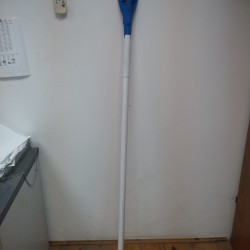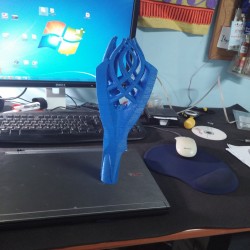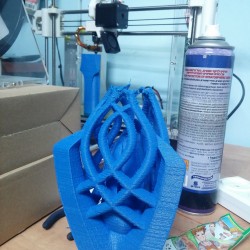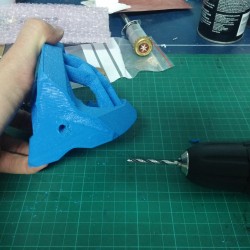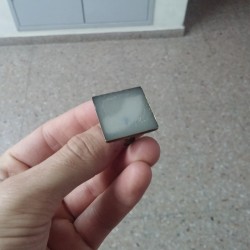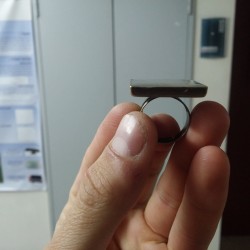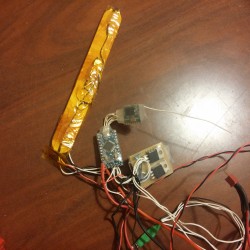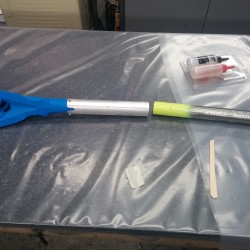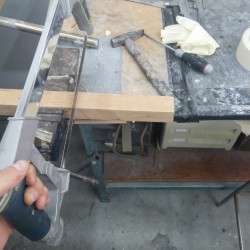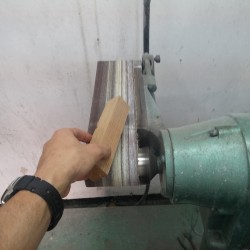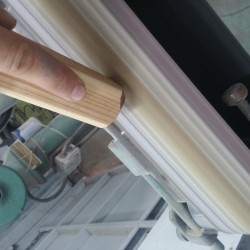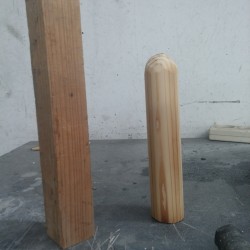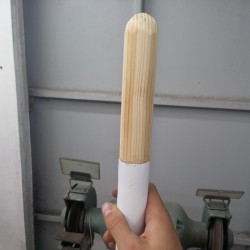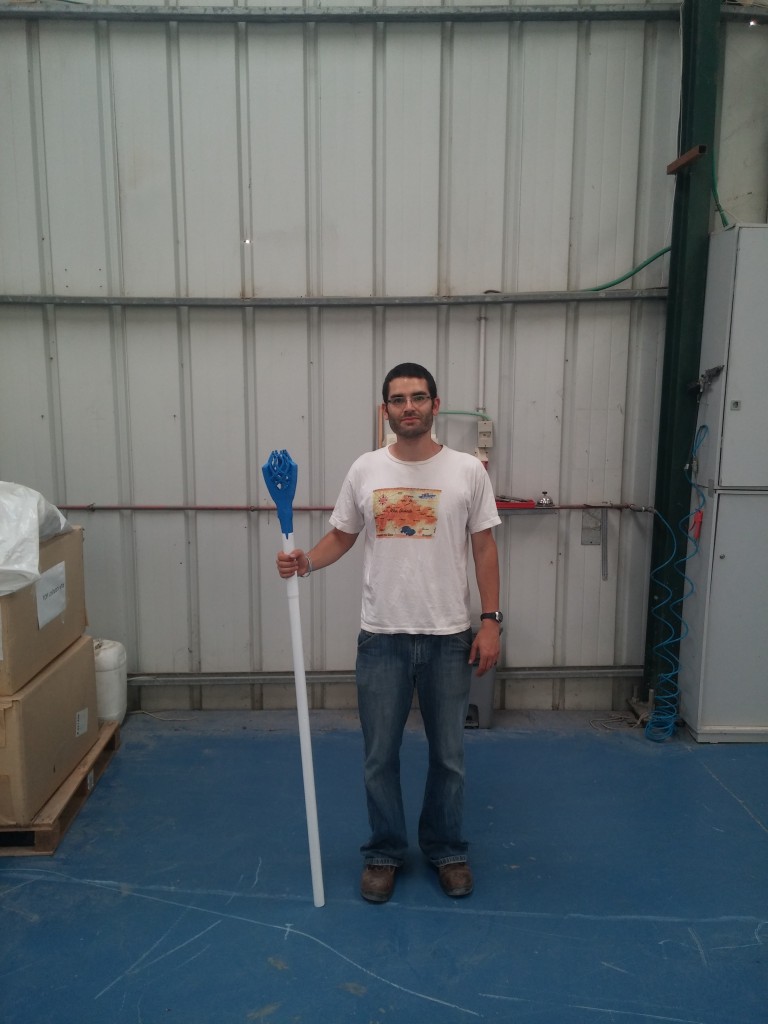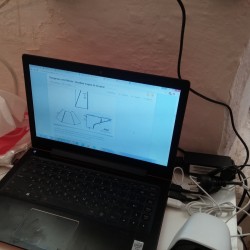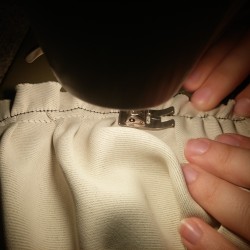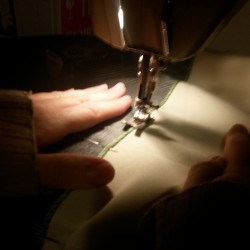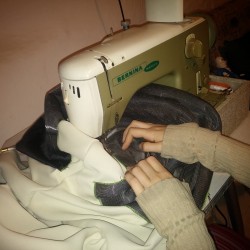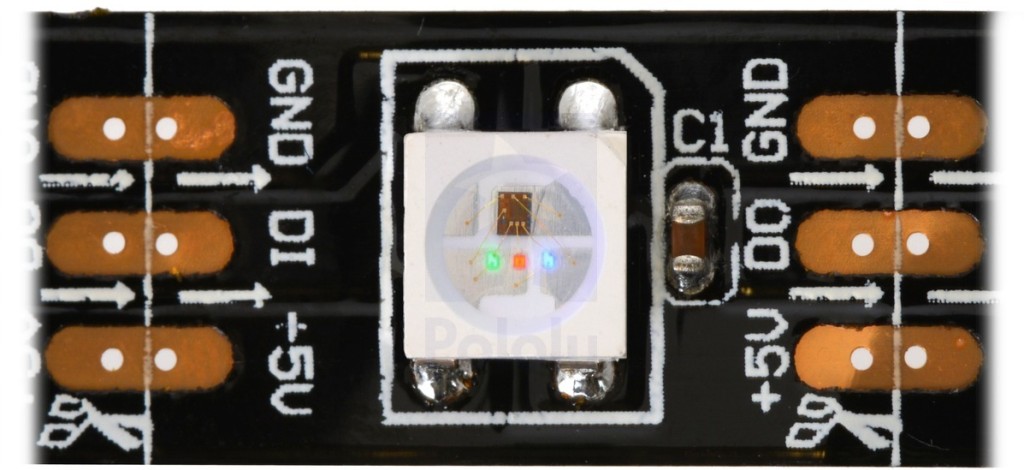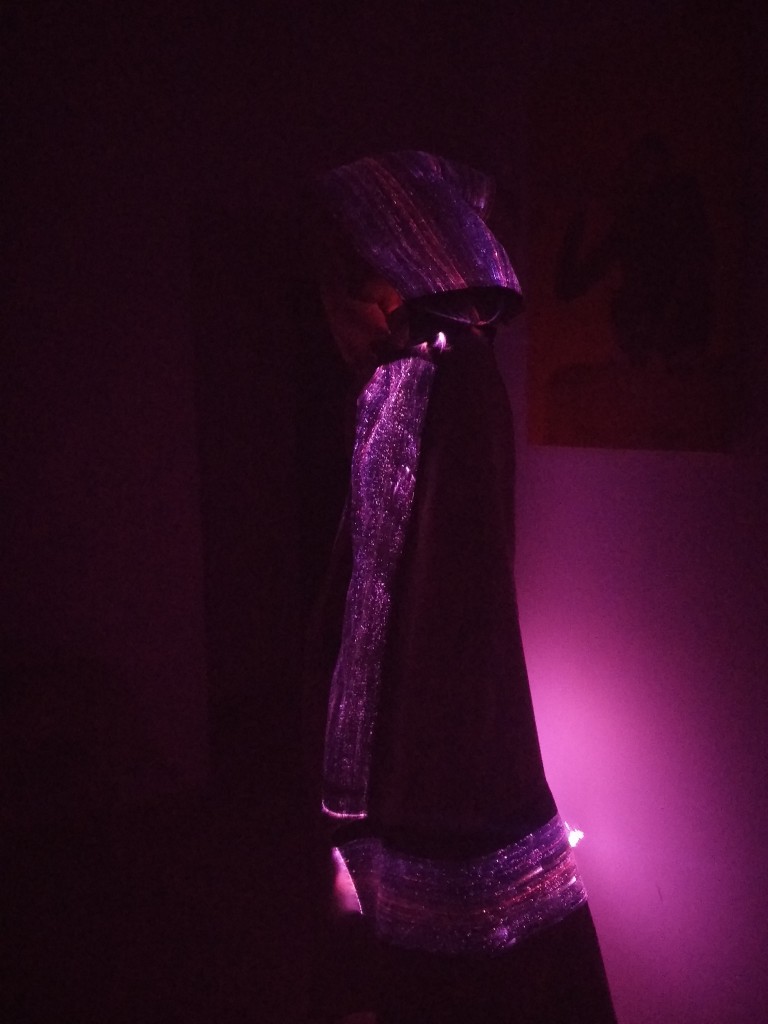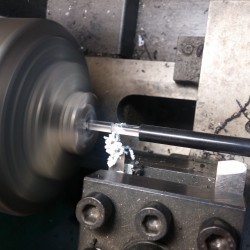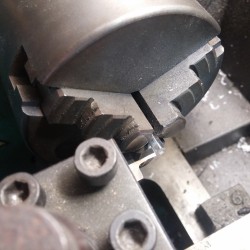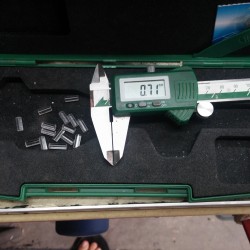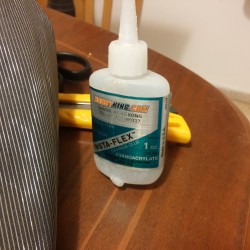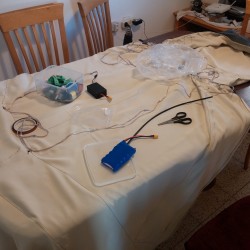The staff
Every warlock has a staff and this staff is packed with goodies – soft lights, high lights, fairy lights and cloak color and pattern control that is being done by a lot of software, electronics and wireless modules – very useful lights for the Playa’s night. The staff was built from three main parts – head, aluminum pipe and carbon fishing rod. Those type of materials are sometime hard to work with and require knowledge in composite materials. The configuration and materials were chosen because of two main feature: Aluminum and carbon are not para-magnetic and they are extremely light – this issue is going to be
explained later.
The head of the staff is Gandalf The White Staff and I download the design from http://www.thingiverse.com/ and printed it – the guy did miraculous job in designing it.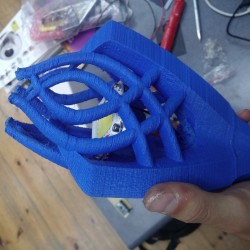
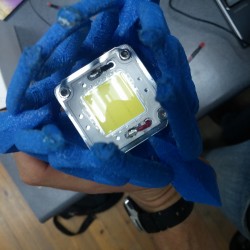
I changed the original size a bit and distorted the ratio according to my needs. It looks great and fit perfectly into my staff design. A 20Watt (!!!) LED light that runs on 36V was mounted inside the head of the staff – I had to remove some of the inner part of the printed staff’s head.
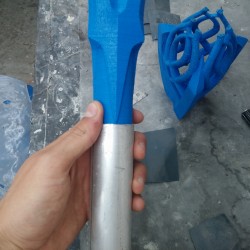
 The aluminum part is it mount, the head of the staff is connected to it, I used a pipe and cut it on the circumference on order to have the head of the staff integrated into the aluminum part. I used 3M screws to secure the two part together.
The aluminum part is it mount, the head of the staff is connected to it, I used a pipe and cut it on the circumference on order to have the head of the staff integrated into the aluminum part. I used 3M screws to secure the two part together.
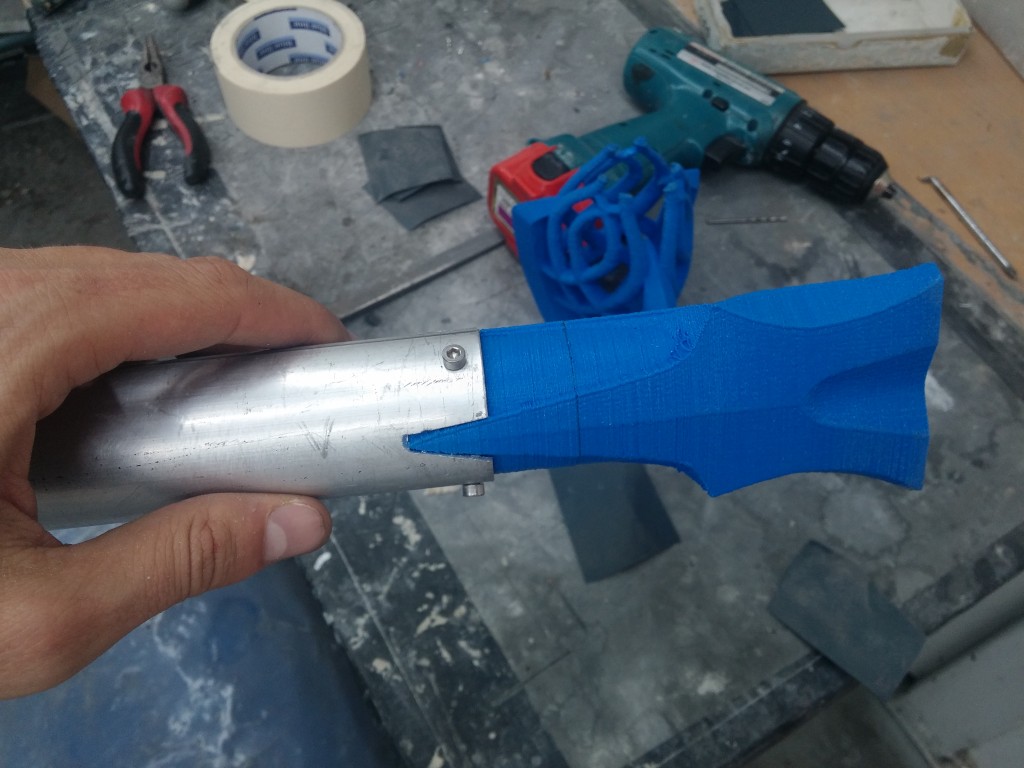
The rest body of the staff itself is made out of carbon fishing rod – I sanded the inner part of the the aluminum part and the exterior circumference of the carbon rod in order to have a nice solid structure. Later on I used an structural aerospace epoxy resign with Aerosol and micro-balloons to create a paste like resin that will hold the part together. 24 hour later it was hard as steel!
Later on I used mat-white 2 components spray paint in order to get the right finish. The bottom end of the staff is sealed with a wooden cap that I hand made. This wat is can be replaced easily and it used as a dumper when I walk with it.
In a “real” warlock staff the are no buttons – only magics  so I wanted to create the same illusion – I wanted to get “smooth” look for the staff . This means no buttons – this is the reason that I used reed switches – reed switched are basically works like regular button or a micro-switch, but, with one different. You don’t have to physically touch them in order to create a “button press”. We simply need to have a strong magnet next to it and a “press” is triggered – on old hard disk naudiom magnet was my weapon of choice. I broke a piece of it, placed it inside a ring and with the help of a friend (Tal Raindel) we casted polyoritan and glow in the dark powder on top of it. The result was perfect!
so I wanted to create the same illusion – I wanted to get “smooth” look for the staff . This means no buttons – this is the reason that I used reed switches – reed switched are basically works like regular button or a micro-switch, but, with one different. You don’t have to physically touch them in order to create a “button press”. We simply need to have a strong magnet next to it and a “press” is triggered – on old hard disk naudiom magnet was my weapon of choice. I broke a piece of it, placed it inside a ring and with the help of a friend (Tal Raindel) we casted polyoritan and glow in the dark powder on top of it. The result was perfect!
This is the ring:
This is the reed switch tapped on a wooden stick with Kapton tape, I slided it into the head of the staff with all the electronics:
Here are some more picture from the construction process of the staff itself, most of it is sawing, cutting, sanding, gluing and painting: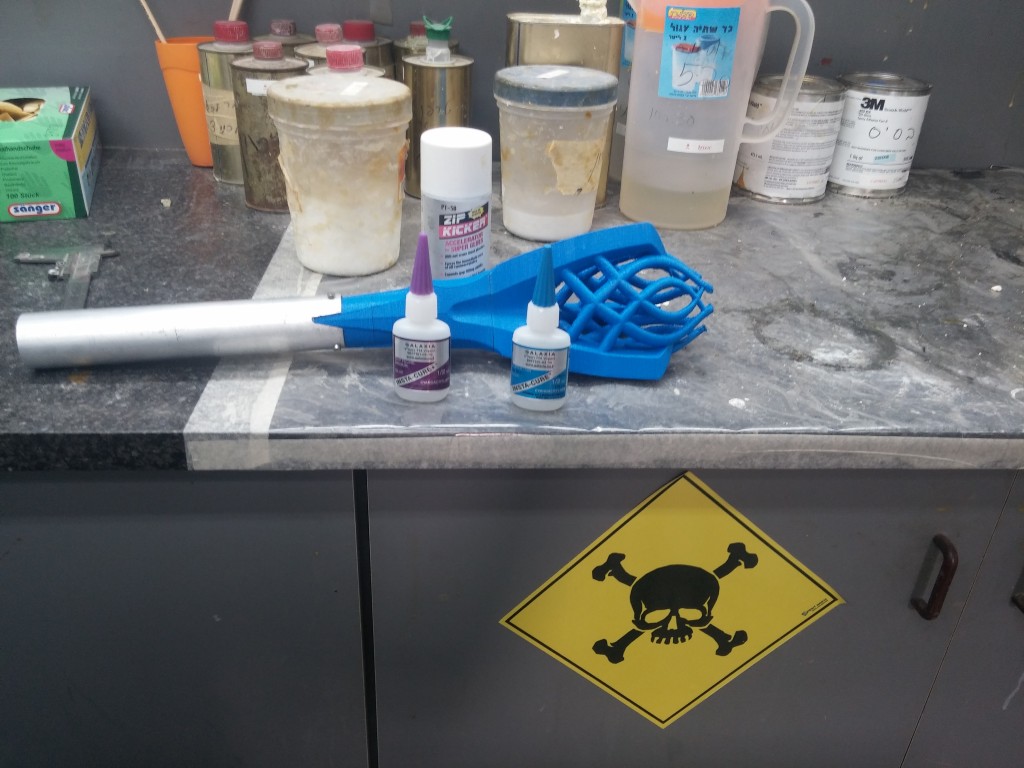
The cloak
The cloak itself is a master piece created from scratch by Tamar Goldstain and I. We saw example of different cloaks online and figured out what’s the right pattern in order to achieve the desired illusion and effect. Tamar Goldstain is truly an amazing artist that studied in Betzalel art academy and spent several days with my in designing and sewing the cloak from scratch. I with to thank her. I don’t know how to sew well and without her this amazing project wouldn’t have finished with this result.
Back to the technical stuff.. The cloak is made from 2 fabrics – one gives the figure, shape and creamy off-white color that suits the Playa and the second one is the fiber optic fabric.
The fiber optic fabric contains lots of lots of “polluted” fiber optics. Usually the purpose of fiber optic is to transfer light from one end to another without and light losses but this time is different. In this special fabric the fibers that were used are emitting light out of the fiber itself – this gives a look of a light leaving trail after it. It was extremely head to work with this fabric without damaging it. It took some time to learn how to accomplish the right result.
The fiber optic fabric ends are connected to RGB addressable LED WS2812 chain via a Perspex (PMMA) rod that I manufactured using a metal lathe machine, later on I sanded it and polished it so the light could go through it, this “adapter” has 2 jobs:
- Create a strong and rigid bonding betweek the LED (which is hard to mount to) and the egdes of the fiber optics of the fiber
- To “scramble” the light – while experimenting with the fabric I noticed that when I create different colors what happens is that each fiber of fabric get a slightly different color and the whole fabric is not looking as a one color, this is caused by the special mechanical structure of the WS2812 LEDs:
The light is not emitted from the same point. The PMMA lets the light scramble inside before it goes into the fabric – this way we get a single color that is not only full red green or blue!

This is how the adapters were made and implemented in the costume – cute, sand, polish, clean, glued cyanoacrilic and attached to the beginning of the fiber with shrink heating tube:
This way each color of the LEDs in the chain can be controlled independently. The fact that those kind of light sources where chosen is super important if we wish to create different patterns and animations. One problem that I had in connecting the cloak’s micro-processor to the LED chain was the fact that the Arduino works on 3.3V because of the RF module and the TTL of the LED chain works on 5V.. so I used 12V-5V DC-DC and logic converted to tackle this issue. Everything was packed in a small black plastic box.
 MDreamer
MDreamer